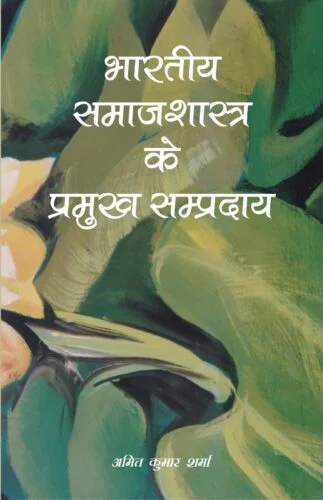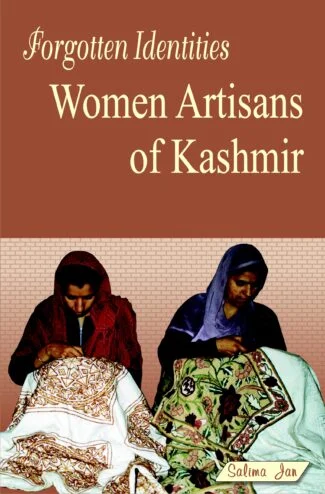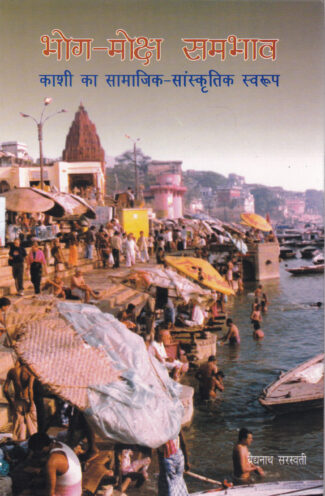

The Kela: A Nomadic ...
The Kela: A Nomadic Caste of Orissa
A Study of Their Conflict and Social Change by: Uma Charan MohantyThe book meticulously deals with the socio-economic, political and cultural facets of the Kela life, their problems in life and how they solve them. It uncovers the romantic life of the Kelas, their family organization, gender issues, the significance and impact of their leadership and caste panchayats, their free love and divorce practices, and their simple but unique lifestyle.
Original price was: ₹800.00.₹720.00Current price is: ₹720.00.
ISBN: 9788124608869
Year Of Publication: 2017
Edition: 1st Edition
Pages : xxiii + 229 p.
Bibliographic Details : Bibliography; Index
Language : English
Binding : Hardcover
Publisher: D.K. Printworld Pvt. Ltd.
Size: 23
Weight: 500
This monograph provides a vivid socio-economic account of a nomadic community, the Sapua Kelas or the snake-charmers of Orissa. Of all the nomadic castes and communities of Orissa, the Sapua Kelas have, perhaps, a unique traditional social organization and interesting lifestyle. Amidst the sweeping social, economic and political changes, the Kela community has retained its features of traditional caste system and is undergoing a process of social mobility which is closely related to the traditional caste system where both endogenic and exogenic factors come to play.
The book meticulously deals with the social, economic, political and cultural facets of the Kela life, their problems in life and how they solve them. It uncovers the romantic life of the Kelas, their family organization, gender issues, the significance and impact of their leadership and caste panchayats, their harmless deceptive methods for earnings and their simple but unique lifestyle. It also delves deep into the perception of outsiders about the Kela life, especially their free love and of the non-hesitancy of the Kela women in divorcing their life partners.
This, once an untouchable communitys struggle for social mobility, is still an ongoing process. From a nomadic and semi-settled lifestyle, with the advent of the democratic institutions, the Kelas have got a new scope for political and social participation, enabling them to look beyond their traditional occupation of snake-charming, and thus attuning their lifestyle to that of the surrounding population. The book is, therefore, an attempt to show how the nomadic folk society of the Kelas is marching towards the settled life of the Indian peasantry, causing their cultural traits vanishing fast, in favour of the neighbouring culture of the other castes.
Foreword
Editors Preface
Preface
Part I: General Background
1. Nomadism and Indian Nomads
Introduction
Broad Nomadic Categories
Hunters and Gatherers Pastoral Nomads Lambadies or Banjaras Todas
Symbiotic Nomads
Beggars and Entertaining Nomads Artisanal and Trading Nomads Earth Workers and Stone Workers Criminal Nomads
India: The Land of Nomadic Communities
Gypsies: Their Indian Origin
The Place of Nomads in Indian Social Structure
Nature of Nomadic Culture and Their Special Features
Civilizational Process and Indian Nomads
2. The Kelas: A Nomadic Caste of Orissa
Who Are the Kelas?
Documents on Kela
Caste Organization
Ahiri Gauda
Ahiri Gauda (Jajpur) Advaria Sata-Ba-A-Da Oriya Kela BajiKara Snake-Charmers Sabakhias
Ghusurias or Rauls Matia Mundapota Pathuria Patia Kela
3. The People and Their History
History of the Origin of Patia Kelas
Language of the Kela
How They Came to Patia
Changes after Coming to Patia
Cultural Progress
Padmakesaripur: The Kela Village and Its Population The Population of the Village
Part II: The Traditional Life of the Kelas
4. The Traditional Economic Life
Material Culture of the Kelas
Appearance: Dress and Ornaments Ornaments
Health
The Food of the Kela
Annual Rhythms
A Day in the Village
Minor Economic Activities
Fishing Catching of Birds Domestication Collection of Fuel
The Major Occupations
Past Occupation Introduction of Snake-charming Nathon Sale of Medicine
Occupations of Women
Picture of Migration
Life in October and November Formation of Groups Scene of Departure Life in the Camp Snake-Charming Tattooing and Begging Routes of the Kela Catching of Snakes Women Take the Lead
The Kelas in the Cities Investments Nomadism versus Sedentary life
5. Social Life of the Kelas
Birth and Childhood
Second Day Rites Fifth Day Rites Rites of the Ninth Day Giving the Name The Final Birth Rite
Rearing the Child Diet
Curing the Disease
Weaning Adoption Division of Sex Coming of the Age The First Menstruation Growth of the Boys Marriage Rituals of Marriage Ank-Bahurup Sex Life Divorce Rituals of Divorce
Old Age and Death
Sudamanta (Good Principle) Death
6. Social Structure of the Kela Caste
The Kela Community
Faction
Clans
Kandara Kela
Lineage
Extended Family
Family and Kinship
Interpersonal Relation within the Family Sibling Relation Other Relations
Kinship Terminology
Living Together: Council and Its Code
Sudamanta Ank-Bahurup Fines Excommunication
Part III: The Revolt against Kela Traditions and Social Change
7. The Kela Caste Panchayat: Leadership Pattern and Factional Conflict
Case I
Case II
Case III
Root of the Faction
The Factional Conflict on Post-Independence Era: The Process of Development and Decline
In the Wake of the New Village Digging of Well The School and Factionalism
Construction of Temple
8. Factional Conflict and the Process of Social Change
Economic Change: Efforts to Quit Traditional Occupation
Social Change and Sanskritization
Changing Birth Rites
Sanskritization in Marriage
Politicization and Modernization
Government Welfare Schemes
Conclusion
Bibliography
Index









